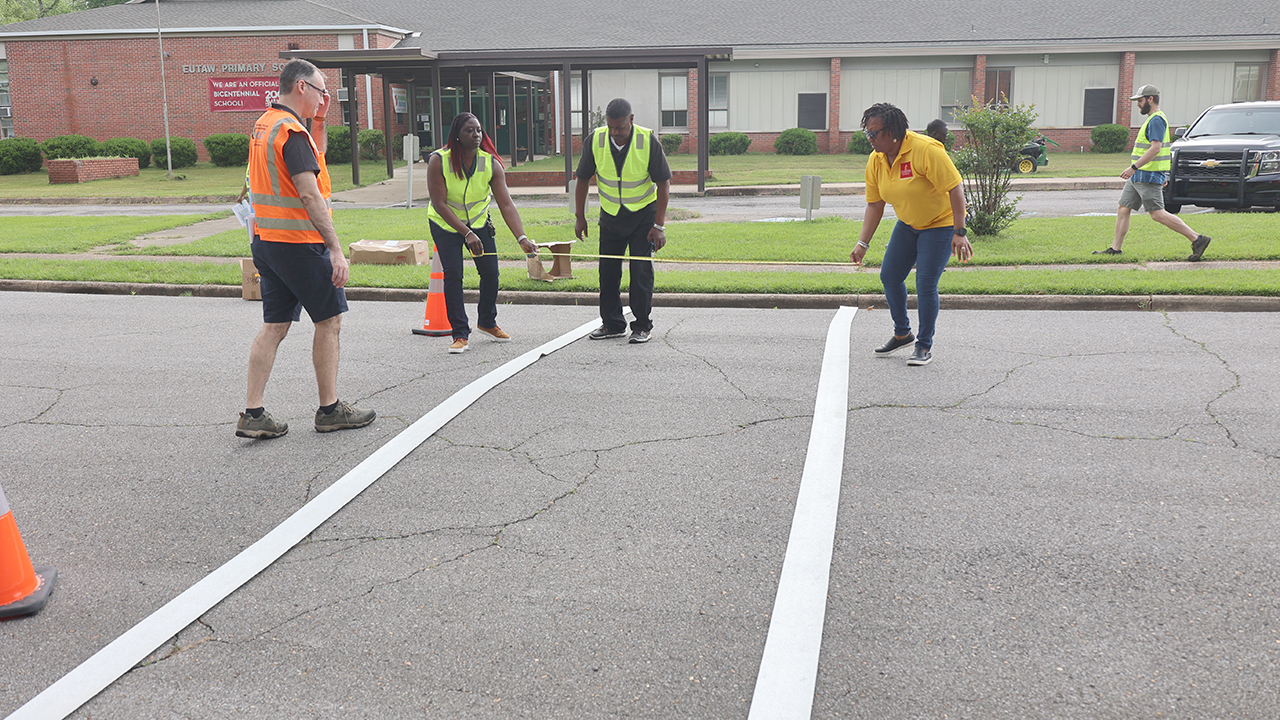Civil engineering professor awarded federal grant to improve active transportation in five Alabama counties
Published: Oct 3, 2024 2:00 PM
By Olivia Ballard
Five Alabama counties are teaming with Auburn University to improve their transportation infrastructure and promote safe walking and cycling for their residents.
Barbour, Bullock, Greene, Marion and Russell Counties are collaborating with Jeff LaMondia, a professor in civil and environmental engineering, and the Alabama Cooperative Extension System’s Live Well Alabama Thriving Communities program to generate safety action plans and implement a series of quick-build, community-painted crosswalk projects to evaluate the benefits and feasibility for broader use.
The work is funded by a $500,000 grant received by LaMondia and the Thriving Communities team from the U.S. Department of Transportation’s Safe Streets and Roads for All (SS4A) program. The SS4A grant is in addition to a five-year $4.4 million grant the team previously received from the Centers for Disease Control and Prevention (CDC) to improve opportunities for safe and accessible active travel by empowering community coalitions across the state to lead the charge for change.
Thriving Communities is working with these five specific counties because of their existing partnerships with community coalitions in these areas promoting walking and cycling activities. Utilizing the AU PARTNER program, a step-by-step community engagement process created by LaMondia and the Thriving Communities team, these counties will identify specific active transportation needs, highlight potential walking and cycling safety issues and develop a playbook to pursue state and federal funds to solve these challenges.
Through evidence-based recommendations, each county will be given support from Thriving Communities to begin implementing actions. LaMondia drives the engineering side of the project, working directly with communities to define needs and generate short-, medium- and long-term solutions.
“The process starts with the counties telling us what they need. We take a grassroots approach, letting the community tell us what is important to them. Then, support them through our engineering work,” LaMondia said, “We love getting feedback from the communities. Evaluation is a big part of what we do. We need to see what works and what doesn’t so we can know whether to use it in other communities.”
Data collection from each county is essential to the project. Camera installations will provide information about crosswalk improvements, focusing on vehicle speeds, yielding to pedestrians and pedestrian usage.
“Data describing pedestrian and cyclist safety from before and after we install painted crosswalks is critical to evaluating the benefits,” LaMondia said. “If we can document safety has been improved, it becomes easier to justify further investment.”
The collaboration of transportation engineers, Thriving Communities and community coalitions will give the counties the ability to prioritize safe infrastructure improvements and pursue low-cost, high-impact solutions. According to LaMondia, community members are essential to the project, ensuring action plans are completed and continued after Thriving Communities is done.
“The involvement from community stakeholders is invaluable,” he said. “In the communities where we have made the biggest impact, we’ve had buy-in from local government, school officials and community organizations.”
Media Contact: , orb0015@auburn.edu,
Jeff LaMondia, professor in civil and environmental engineering, works with communities to install a new crosswalk in Eutaw, Alabama.


